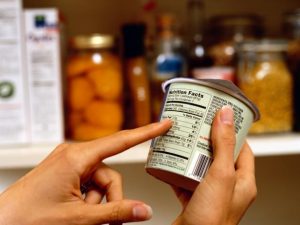Questions and Answer Path Magazine and Dr. Kantor

What are some of the biggest mistakes that people typically make when reading food labels and packaging? (i.e. not paying attention to serving
sizes, getting mixed up by claims like “organic” or “natural” on
the front, etc.).
Food labels are misleading and in some cases very confusing. Here are common mistakes people make when reading a food label.
They ignore the ingredient list. And only focus on the nutritional facts portion of the label. Almost all of the prepackaged foods contain preservatives and in some cases harmful chemicals in the form of dyes, syrups and oils. The ingredient list portion of the food label is far more important then the nutrition facts portion of the food label. Processed ingredients including red, yellow, and blue dyes, hydrogenated oils (trans fatty acids), high fructose corn syrup, are all located on the ingredient list, NOT under the nutrition facts label. Foods with long ingredient list are less healthy due to the amount of preservatives; these types of foods are typically frozen foods, snacks, or anything found in a box or a bag. It is best to purchase foods that do not have food labels like fresh fruits, vegetables, fish, beef, poultry, eggs, etc.
Additional Harmful Ingredients include:
- Avoid yellow, blue or red dyes
- High fructose corn syrup or any added sugar or syrups
- Hydrogenated oils
- Magnesium stearate (or stearic acid) is linked to increased risk for cancer and immune system suppression.
- Monosodium Glutamate(MSG) disguised as “natural flavors. Disrupts gut flora and suppresses immune system.
- Carnauba wax is used in car wax and shoe polish (used for texture)
- Titanium dioxide is a carcinogen
They are mislead by what a serving size actually is. This is a very misleading aspect of the food label, companies may offer a portion that seems like a serving size and if you read the label carefully it may take 2-4 times that amount to be a real serving, which multiplies the nutrition facts, doubling the sugar, fat, calorie and sodium content. Common serving size deceptions include pints of ice cream, sports drinks, juice bottles, cakes, etc.
A good rule of thumb is if the food is packaged it is not as healthy as the homemade or unprocessed option.
They are afraid of fat. A serving of mixed nuts, trail mix or nut butters contain a high percentage of total fat. Seeing this in writing makes some populations nervous especially if they were brought up during the “fat fee craze.” It is always important to emphasize that fat does not make you fat, sugar is the bad guy. Consuming calories through healthy fat sources like nuts, nut butters, avocados, guacamole, etc. will not drive up insulin levels like low calorie but high sugar diet foods do. When insulin is spiked the hormones are disrupted and our body becomes inefficient at burning fat or utilizing store fat for fuel.

